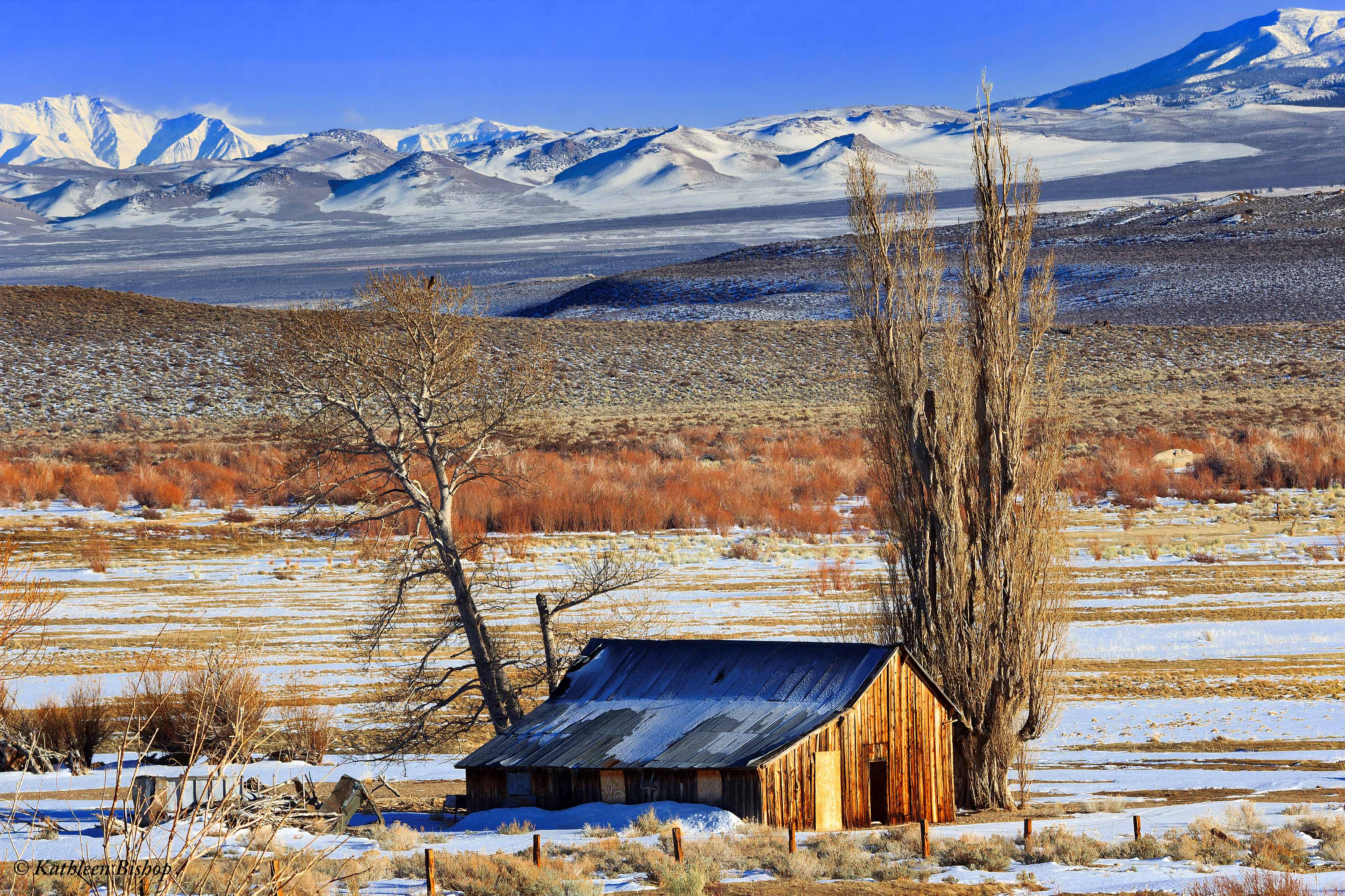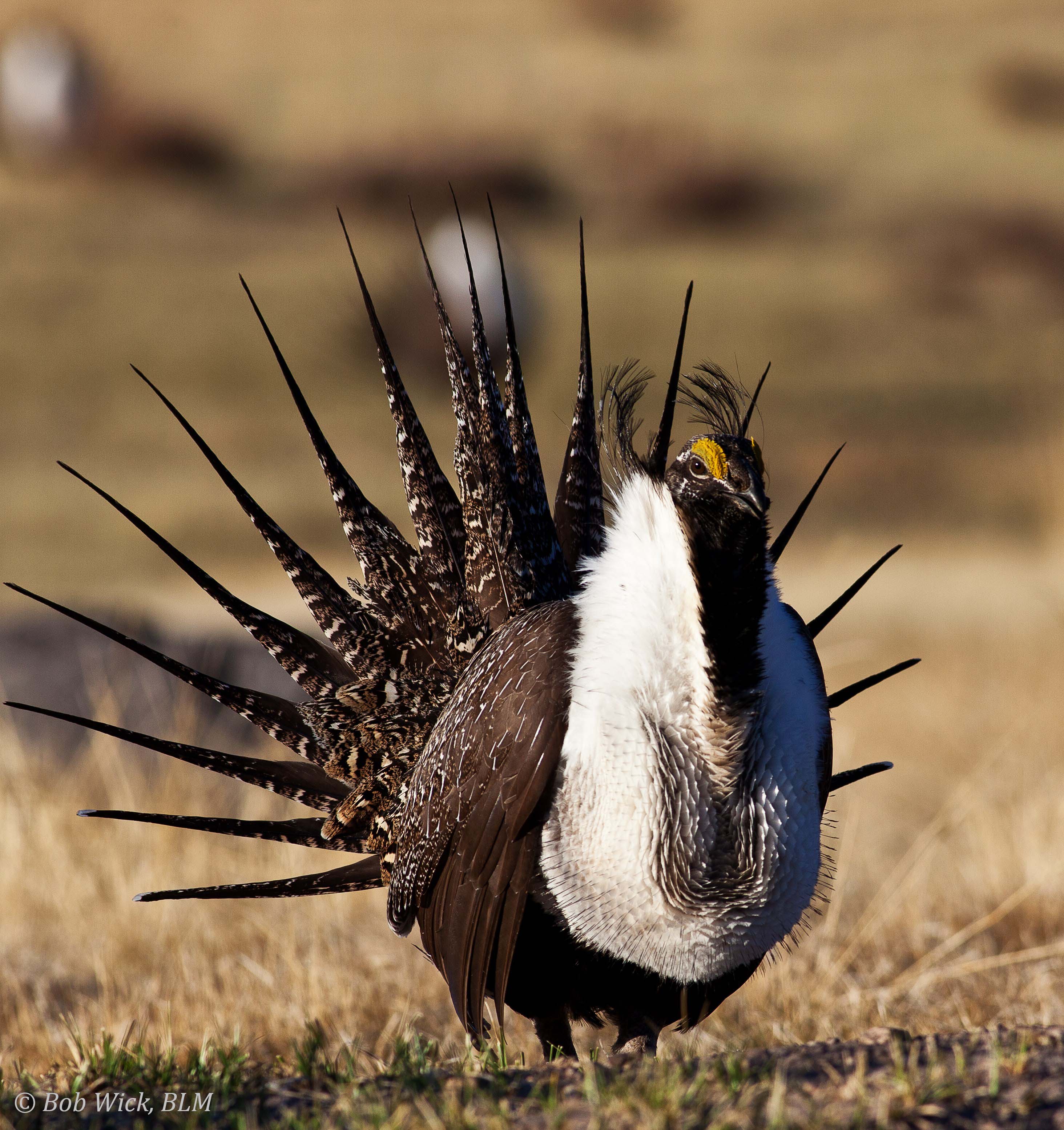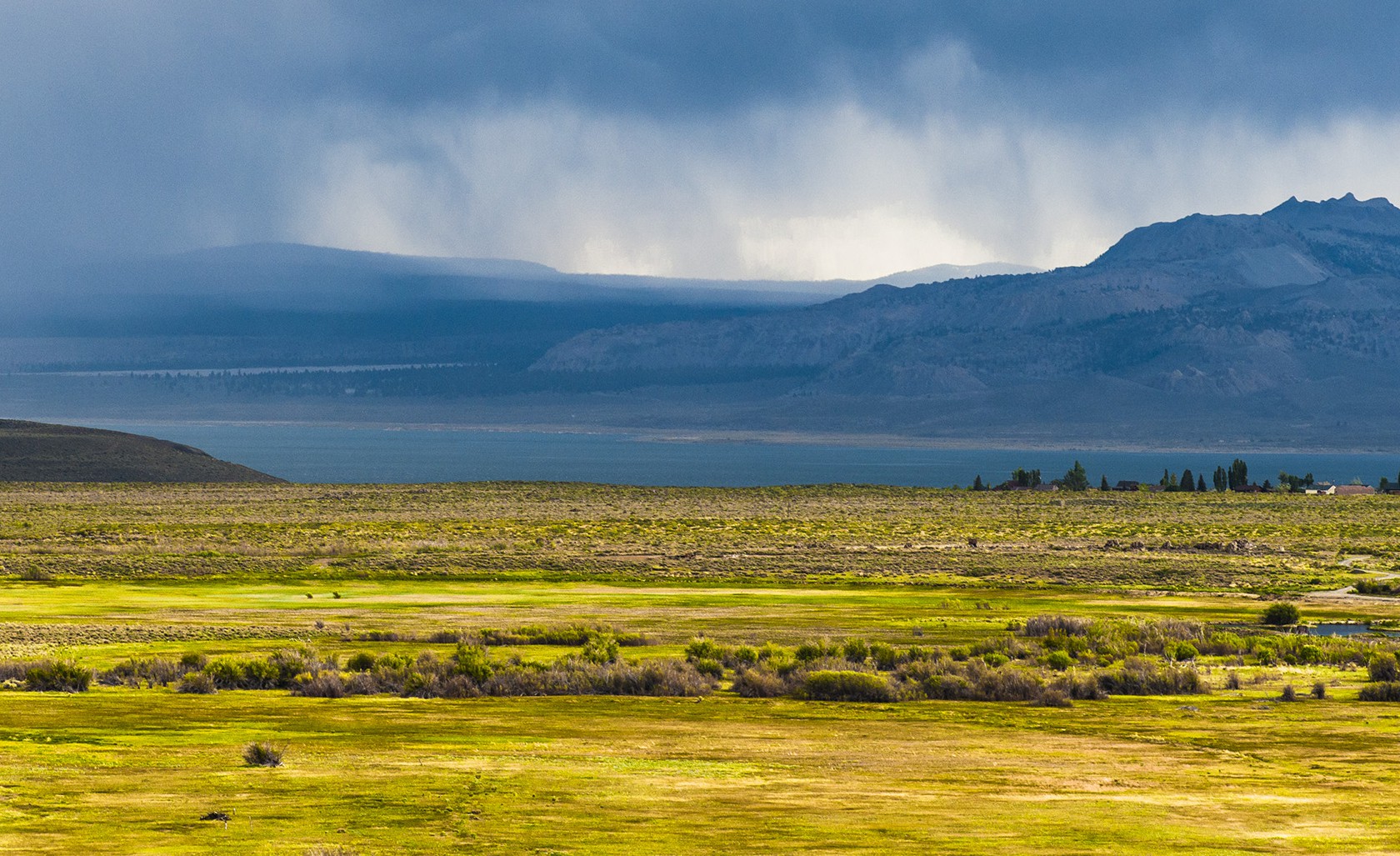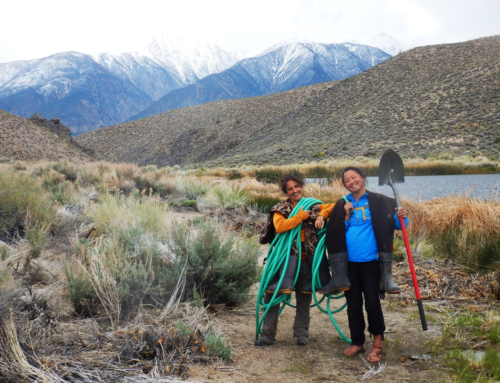Spectacular views. Seeping springs. Homes for iconic wildlife such as mule deer, bobcat, and the Bi-State sage-grouse.
This is Conway Ranch and thanks to you and community leadership, this special place was voluntarily conserved in 2014, providing a lasting connection to our region’s history and economic identity.
Now discussions are taking place to determinehow Conway Ranch will be managed into the future, and your voice can make a difference.
A Strong Partnership
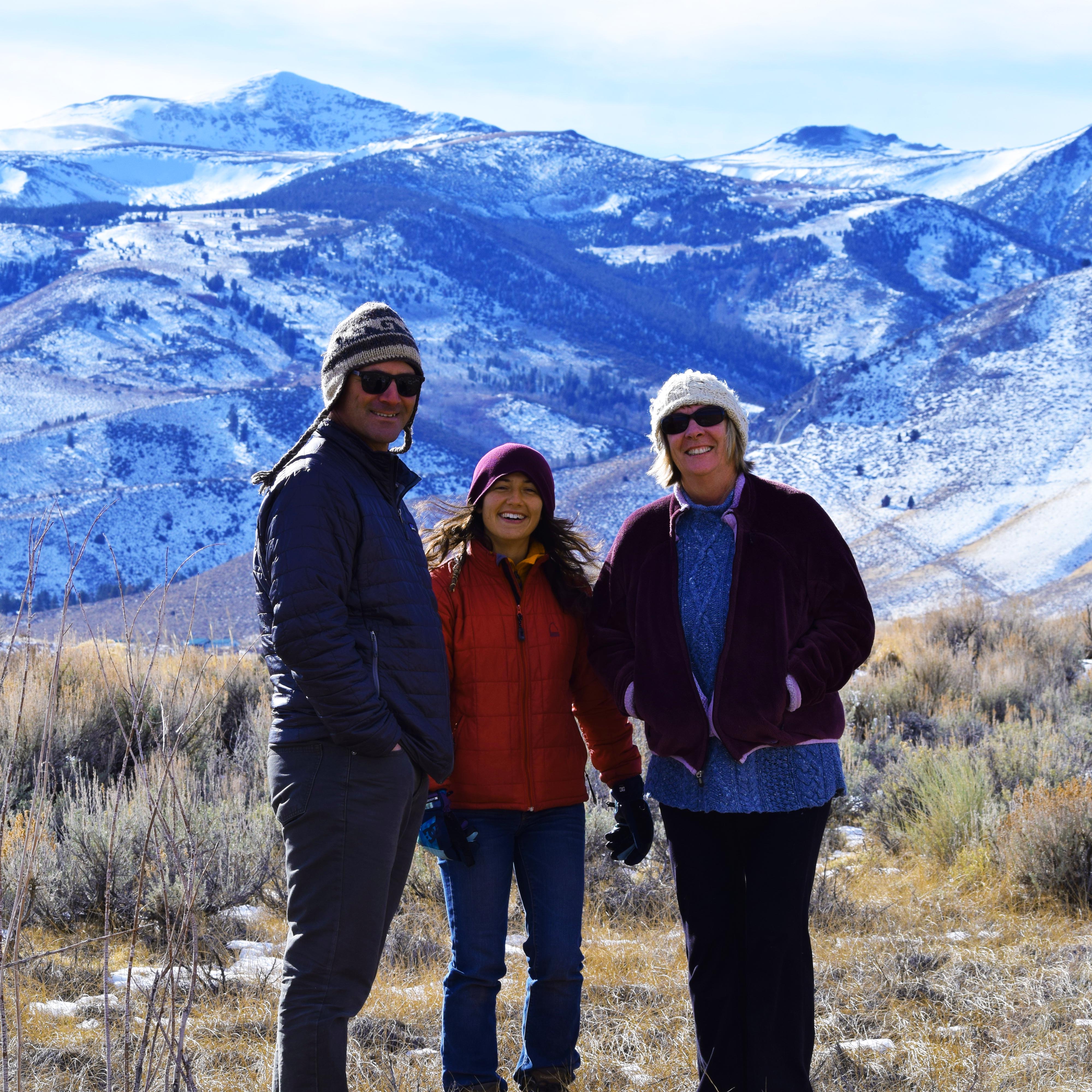
Tony Dublino of Mono County (left), met with ESLT staff members Sara Kokkelenberg (center) and Kay Ogden (right) this past winter at Conway Ranch.
When Mono County teamed up with Caltrans and Eastern Sierra Land Trust to conserve Conway Ranch in 2014, the countyretained ownership of the land. The goal was to protect wildlife habitat, water resources, and scenic views in a manner that respected the ranch’s heritage and unique qualities.
For Eastern Sierra Land Trust, ourcommitment to conservation at Conway Ranch is permanent. It is our responsibility to make sure that the land is maintained in a way that benefits our local community by promoting the goals of the agreement that was signed in 2014. What’s more, should Mono County ever choose to sell the property, the conservation agreement goes with the land: no matter who owns it, Conway Ranch will be protected from development or other harm forever.
As our conservation partner, Mono County is taking actions to makesure that Conway Ranch continues to provide safe habitat forthe wildlife that rely on it. On March 7th, the Board of Supervisors voted to discontinue domestic sheep grazing on the property, due to concerns overhow possible disease transmission may affect endangered Sierra Nevadabighorn sheep living in the mountains nearby.
The county is now in the process of determining a long-term management plan for Conway Ranch. We’re working with the county and other partnersto find a way to support local economic needs while protecting and even enhancing the land’s conservation values.
That’s a great vision and one that is practical and obtainable.
Vision For the Future
Well-managed grazing is one way to ensure that Conway Ranch continues to provide a good home for wildlife, while also making sure that paying for habitat enhancements does not become a burden on local taxpayers.
That’s because sustainable grazing, when done in accordance with best management practices, can not only exist alongside wildlife habitat it can also improve it.
For example, research shows that responsible cattle grazing goes hand-in-hand with helping the rare Bi-State sage-grouse thrive. When managed well, cattle can improve the soil and keep vegetation from becoming overgrown. Cattle grazing can also create a mosaic of diverse insects and plant seedlings that sage-grouse chicks depend on for food.
What’s more, the sage-grouse is a bellwether species. This means that, in places where its numbers are strong, other birds and mammals are likely to be healthy, too.
Protecting well-managed rangeland is a top priority for land management agencies in our region. Just a few months ago, ESLT helped secure a new $8 million funding sourcethat will go directly to ranchers in our area to help them complete projects that will enhance habitat on their range. The title of this Regional Conservation Partnership Program (RCPP) award is”Livestock in Harmony With Bi-State Sage-Grouse.” (To read more about this award, Click Here.)
Choices Ahead: Your Voice Matters
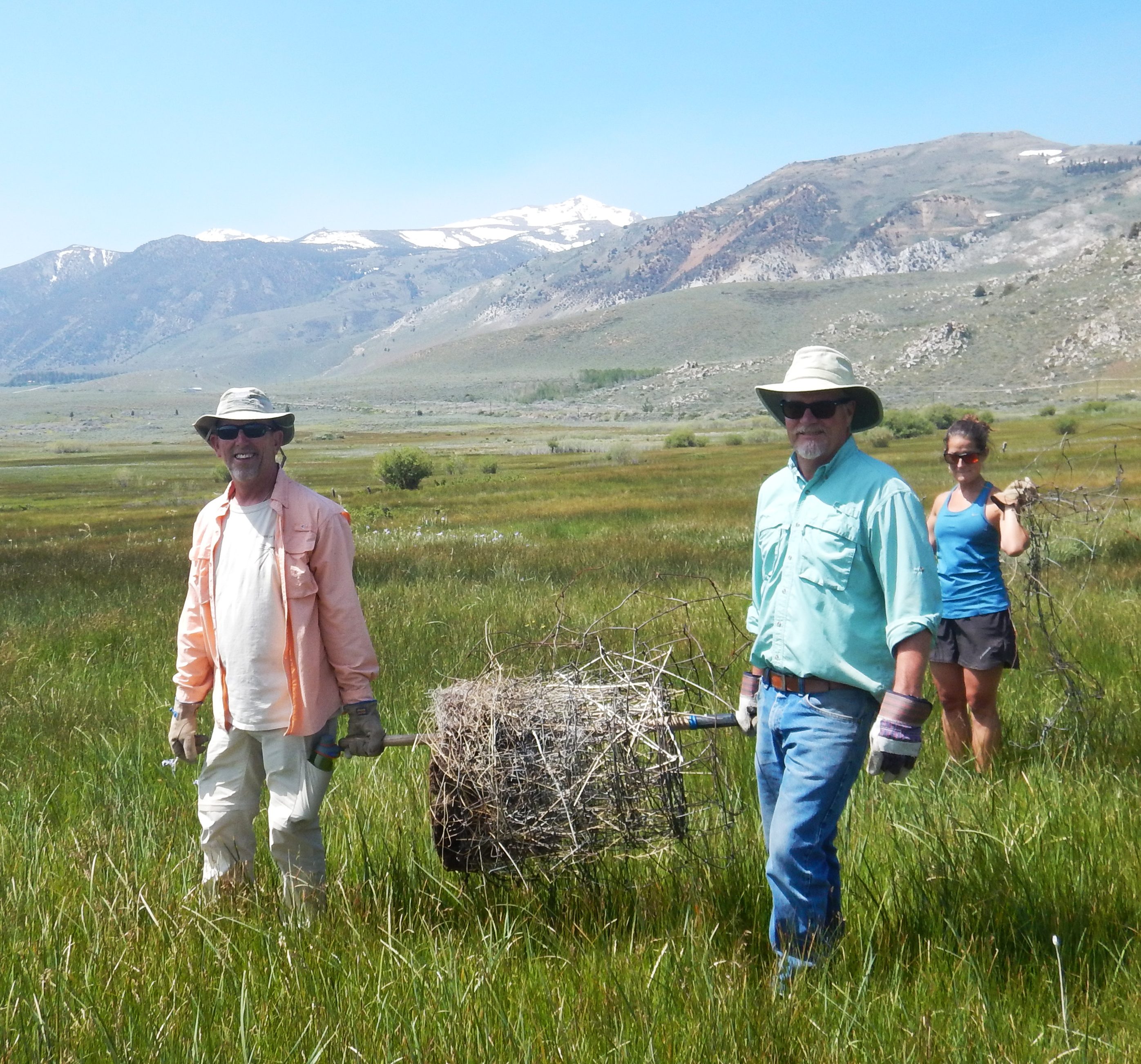
Last year, volunteers began the work to make Conway Ranch a better home for wildlife. With your help we can continue this important restoration projectthis spring and summer.
This spring and summer, county officials are discussing how to best manage Conway Ranch and they will be asking for public input.
Currently, a one-year “grazing rest” is planned for Conway Ranch. Irrigation will continue, which will maintain the property’s important habitat. Should grazing be permanently discontinued, our conservation agreement with Mono Countyspells out what actions need to be taken by the landowner, such as restoration and weed management.
The county could choose to sell or transfer the land – and if this were to happen, we would work with thenew landowner to ensure that Conway Ranch’swetlands, wildlife, and scenic values remain protected.
As the county’s conservation partner and the organization responsible for ensuring the original goals of the project are upheld, we look forward to this discussion with our community. And in the meantime, we’re working with the county to set up volunteer workdays this summer to maintainirrigation ditches, pull out old fencing, and flag existing fences with markersto make them more visible to wildlife.
To learn more, make sure you’re receiving oure-newsletter; you can sign up by Clicking Here. In it, we’llprovide regular updates to keep you informed about what options are on the table and how and when to share your views – and we’ll also let you know when you can lend a hand by joining our volunteer team. You can play an important role in ensuring that this spectacular property continues to balance our ranching history and wildlife habitat in a way that will benefit our community for generations.



